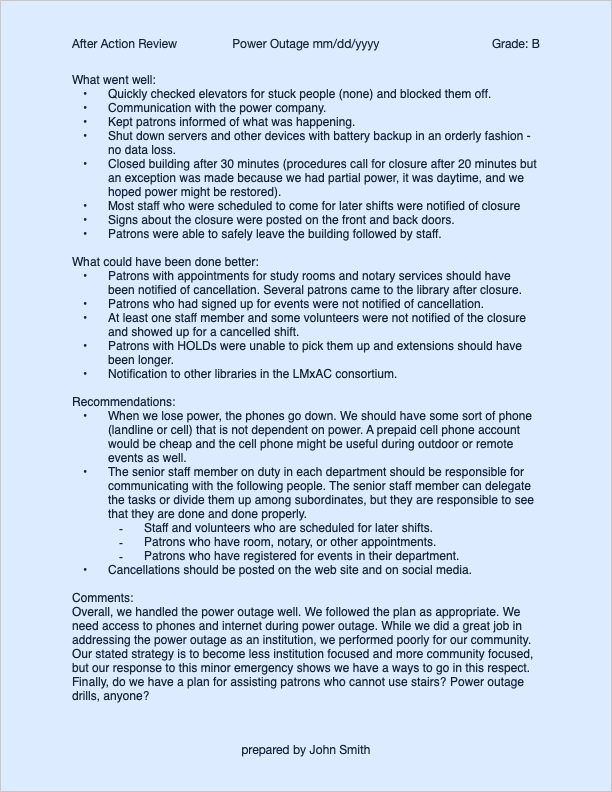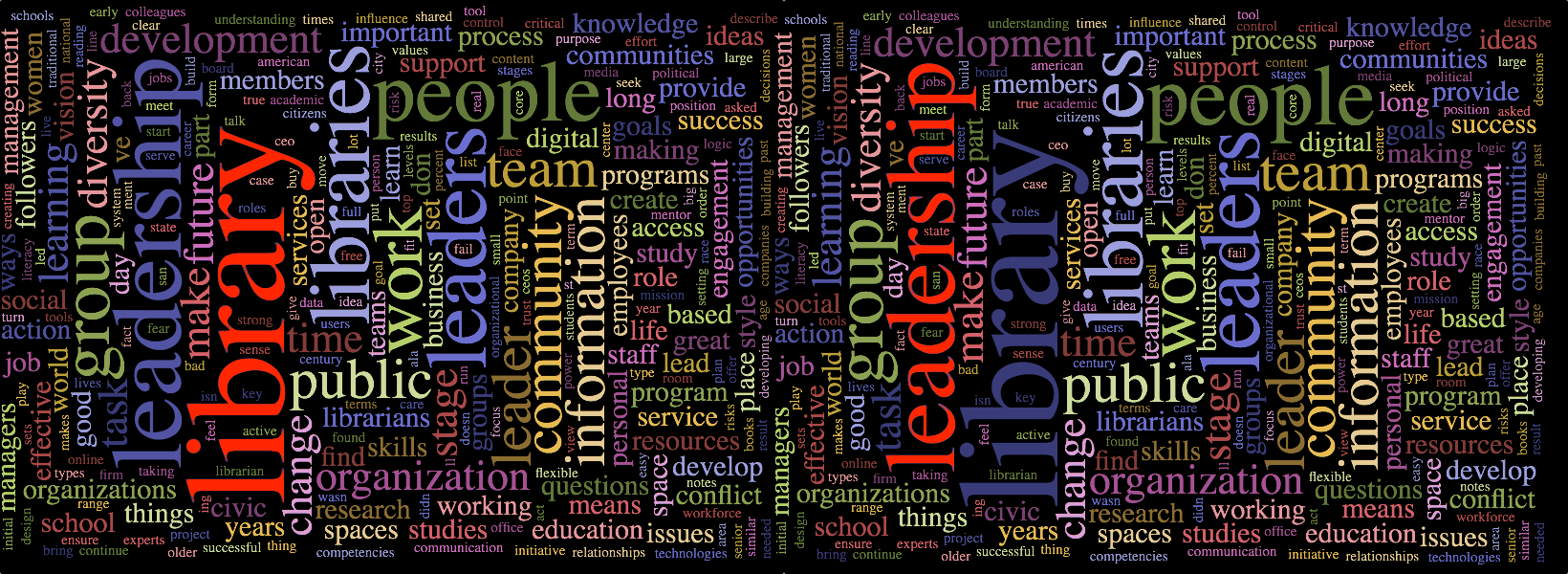I grew up calling them “post-mortems.” You know, those horrible one-off meetings that are often held after something goes badly (eg: a grant application is denied or turnout for an event is abysmal). The objective is to figure out what went wrong and fix the mistakes. No one likes post-mortems because they mean facing failure and everyone comes away discouraged. The very name (“after-death”) is a turn-off. And libraries rarely have them.
And yet, I have always believed that constantly reviewing actions is essential to a healthy, productive organization. Such reviews are important both when something goes badly and when something goes very well indeed, thank you. I also believe they should be held for all sorts of events, large and small.
So let’s start with a name change. After Action Review (AAR) sounds more neutral and is a widely used term.
And let’s stop thinking of them as long, boring, discouraging meetings. Quick surveys and short, two paragraph reports posted on groupware for discussion are usually more useful forms of AAR than sit-down meetings.
I was pleased to hear a discussion of AARs as a core element of strategy on a recent episode of The Library Leadership Podcast. When learning becomes a core element of ongoing strategy, After Action Reviews can be seen as positive rather than negative exercises. Through them, the organization can learn from the community and from each other. Instead of resisting, staff and management embrace the practice and incorporate assessments into the organization’s culture. In addition to encouraging an outward looking orientation, AARs stimulate communication and idea sharing that is not merely reactive to negative circumstances but rather positive and forward looking.
Perhaps most importantly, AARs encourage constant change. Instead of doing things the same way every time year after year even as technology, community needs / interests, and staff skills change, AARs facilitate steady evolution from mediocre to good to excellent. They also make it possible to face failure when that happens (and it will) because staff will have the sense that positive outcomes outnumber the failures and failures are merely additional opportunities to learn, change and improve.
After an event, ask participants to quickly fill out a short survey. What did they like; what didn’t they like; what could be better? Get specific where you need to (speaker quality, etc), but make it easy for people to reply. After an event, ask staff to submit a short report on what went well and what could have gone better. Ask everyone for suggested improvements. Staff reports and summaries of surveys should be posted publicly on groupware so others can see, learn, and discuss as well.
For example, an AAR for response to a power outage might look something like this:

Management should make a point of reading AARs (another reason for keeping them concise) and responding. This way staff realize that the reports matter and can make a difference. We have all worked in environments in which suggestions and reports are requested or even required but no action is taken. Management sets the tone, so step up and interact.
